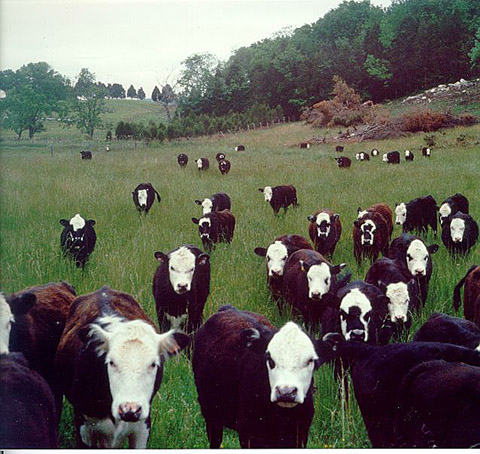
From the Texas A&M University Beef Cattle Browsing Newsletter, Dr. Steve Hammack.
The Global Animal Partnership has a five step program to reach their top level of standards for the welfare of cattle. Some of the things required may be of interest.
You can’t use therapeutic drugs for market animals and can’t use sub-therapeutic drugs for any animals. You do have to relieve animal’s pain and suffering, or properly euthanize them if relief is not possible. Animals must be kept in minimum Body Condition Score of 4. Lameness cannot exceed two percent of the herd. You can separate animals from the herd only for a brief period when newly introduced or if an animal is injured or sick.
Cattle must be handled quietly and without mistreatment. Lariats may be used if necessary but “only by experts in the use of this tool.” Electric prods may be used “only if there is imminent risk of injury to the animal or handler.” Squeeze chutes must allow animals to breathe normally.
The number of assisted calvings and caesarians must not exceed five percent of the herd each year. Fenceline or two-stage weaning is required. Calves must not be weaned before six months of age. Records must be maintained of all locations where an animal has been kept. Ear notching, branding, and wattling are prohibited. No more than two ear tags may be applied per animal. Males may not be castrated and females may not be spayed. Disbudding of horns is prohibited. Horns may be tipped “only to prevent growing into an animal’s head or in response to behavior that puts other animals or handlers at risk.”
Animals must have “continuous access to drinking water and must be provided with a full ration that supplies optimum nutrition at each specific stage of life.” Cattle must live continuously on range or pasture, except during extreme weather conditions posing a risk to animal welfare, containing at least 75 percent vegetative cover. Animals must be provided with shade and be protected from heat and cold stress. Numerous specific requirements exist concerning housing conditions, control of insects, rodents, and predators, movement and transport, and marketing. (Marketing through auction or sale barns is prohibited.)
Full details are available at www.globalanimalpartnership.org. Attaining these standards would certainly be challenging and they are more extreme than those recognized by most welfare authorities in order to ensure animal well being.
